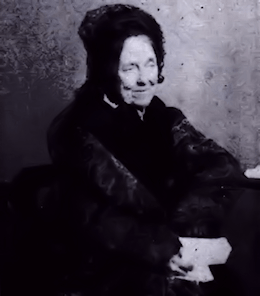Textus Receptus Bibles
Julia E. Smith Translation 1876
| 20:1 | And it will be at the time of the return of the year, at the time of the going forth of kings, and Joab will lead the power of the army, and he will destroy the land of the sons of Ammon, and he will come and press upon Rabbah: and David dwelt in Jerusalem. And Joab will strike Rabbah and destroy it |
| 20:2 | And David will take the crown of their king from off his head, and he will find the weight a talent of gold, and in it precious stone; and it will be upon David's head: and he brought forth the spoil of the city exceeding much. |
| 20:3 | And he brought out the people that were in it, and he will contend with the saw and with threshing-sledges of iron, and with saws. And David will do thus to all the cities of the sons of Ammon. And David will turn back and all the people, to Jerusalem. |
| 20:4 | And it will be after this and war will stand up in Gezer with the rovers: then Sibbechai the Hushathite struck Sippai from the children of Rapha, and they will be subdued. |
| 20:5 | And there will be yet war with the rovers; and Elhanan son of Jair will strike Lahmi the brother of Goliah the Gathite, and the wood of his spear as a weaver's beam. |
| 20:6 | And there will be yet war in Gath; and there will be a man of measure, and his fingers six and six, twenty and four: and he also was born to Rapha. |
| 20:7 | And he will reproach Israel, and Jonathan son of Shimea, David's brother, struck him. |
| 20:8 | These were born to Rapha in Gath; and they will fall by the hand of David and by the hand of his servants. |

Julia E. Smith Translation 1876
The Julia Evelina Smith Parker Translation is considered the first complete translation of the Bible into English by a woman. The Bible was titled The Holy Bible: Containing the Old and New Testaments; Translated Literally from the Original Tongues, and was published in 1876.
Julia Smith, of Glastonbury, Connecticut had a working knowledge of Latin, Greek and Hebrew. Her father had been a Congregationalist minister before he became a lawyer. Having read the Bible in its original languages, she set about creating her own translation, which she completed in 1855, after a number of drafts. The work is a strictly literal rendering, always translating a Greek or Hebrew word with the same word wherever possible. Smith accomplished this work on her own in the span of eight years (1847 to 1855). She had sought out no help in the venture, even writing, "I do not see that anybody can know more about it than I do." Smith's insistence on complete literalness, plus an effort to translate each original word with the same English word, combined with an odd notion of Hebrew tenses (often translating the Hebrew imperfect tense with the English future) results in a translation that is mechanical and often nonsensical. However, such a translation if overly literal might be valuable to consult in checking the meaning of some individual verse. One notable feature of this translation was the prominent use of the Divine Name, Jehovah, throughout the Old Testament of this Bible version.
In 1876, at 84 years of age some 21 years after completing her work, she finally sought publication. The publication costs ($4,000) were personally funded by Julia and her sister Abby Smith. The 1,000 copies printed were offered for $2.50 each, but her household auction in 1884 sold about 50 remaining copies.
The translation fell into obscurity as it was for the most part too literal and lacked any flow. For example, Jer. 22:23 was given as follows: "Thou dwelling in Lebanon, building as nest in the cedars, how being compassionated in pangs coming to thee the pain as in her bringing forth." However, the translation was the only Contemporary English translation out of the original languages available to English readers until the publication of The British Revised Version in 1881-1894.(The New testament was published in 1881, the Old in 1884, and the Apocrypha in 1894.) This makes it an invaluable Bible for its period.